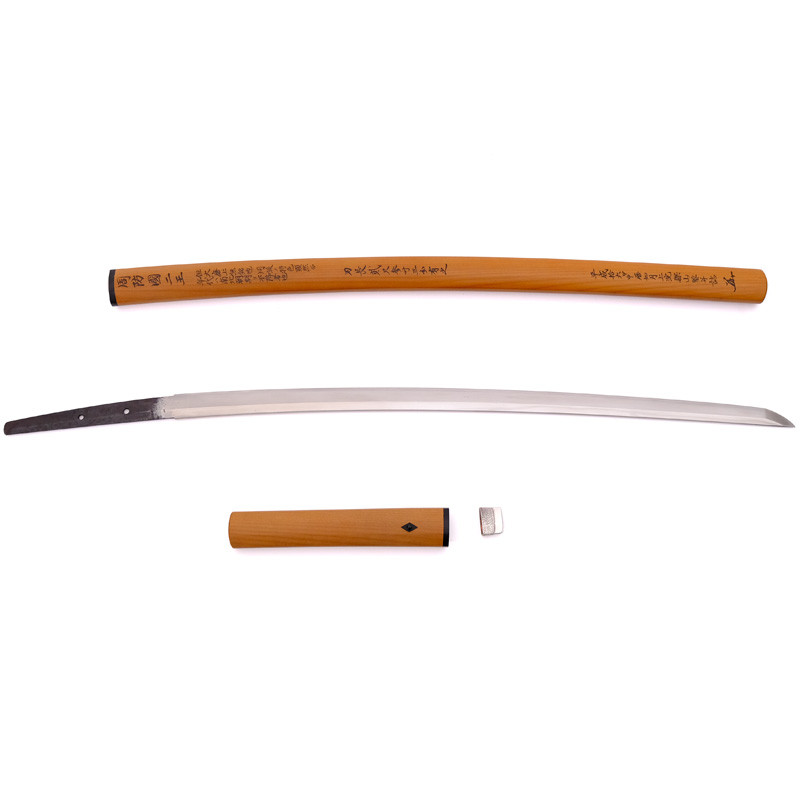Study
&
Team Review |
<Nioh 二王 school in Suo No Kuni Province 周防国 was founded by Nioh Taro Kiyotsuna 二王太郎清綱 during the Kamakura period. The oldest known work of this blacksmith dates from 1265 but it is said that he started forging from 1205.
Nioh School was located in the former province of Suo, now Yamaguchi Prefecture, in the far west of Honshu. This province was ruled by the Hojo clan 北条 in the Kamakura period, then the Ouchi clan 大内 in the Muromachi period, and finally the Mori clan 毛 利 from the Sengoku period.
The province of Suo was controlled by the Todai-Ji temple of Nara prefecture where the Yamato forging tradition was located. This is why the Nioh School was strongly influenced by this tradition and is a part of it.
The Nioh school thus forged in the Yamato tradition, with a sober and elegant Sugata, straight Hamon type Suguha and elongated Kissaki.
Another important point about this relationship and origin, the Yamato tradition having forged for the powerful Buddhist warrior-monks, a very important counterpower in medieval Japan, Many of their products were later banned and destroyed, notably by Toyotomi Hideyoshi.
These blades of the Yamato tradition and especially of the Nio school are therefore few in number and highly sought after today.
The origin of the school name remains subject to two theories. The first theory would be an issue of a legend, when Nioh Temple was on fire at Suō’s Kizakimura 木崎村, Kiyotsuna, the founder, used a tachi to cut a chain from a statue of a guardian (Statues Nioh Deva, Niō-son, 二王尊/仁王尊) and the will of the flames. The second theory, more realistic, would be that these blacksmiths lived in a village called Nioh No Sho (二保庄), in the Yoshiki district 吉敷 of Suo province.
It is also important to note that Nioh may refer, as in the legend of Kiyotsuna, to the guardian statues found around temples and who are the guardians of Buddhism, the Nio 仁王. Their faces and postures are angry and threatening, with muscles protruding, symbols of their omnipotence. It is also funny to know that these representations of muscular warriors are of Greek inspiration, especially the image of Heracles which was reinterpreted in Greco-Buddhist art to represent Vajparani, the protector of Buddha.
These statues appeared in Japan as early as the Heian period (794-1185) and developed particularly during the Kamakura era (1185-1333). During times of war, these were particularly adored and appreciated by the Samurai as symbols of powerful divine warriors.
Given the pronunciation and symbolism of the "Two Kings", even if the kanji are different (二王 / 仁王), certainly the Nioh forge school had a favorable aura, particularly respected and admired.
|
















Share your opinion
error Your review appreciation cannot be sent
feedback Report comment
check_circle Report sent
error Your report cannot be sent